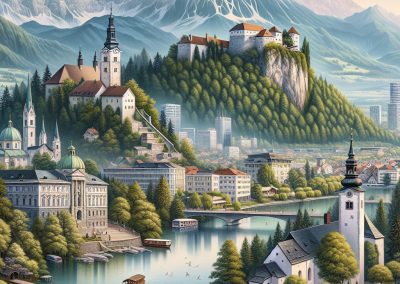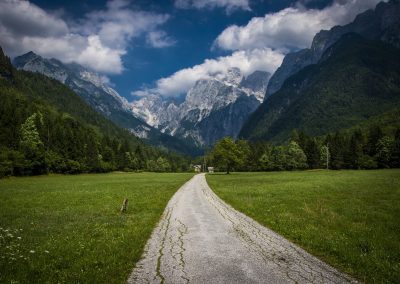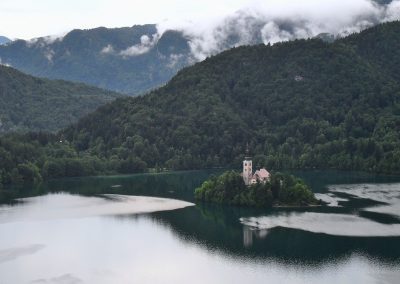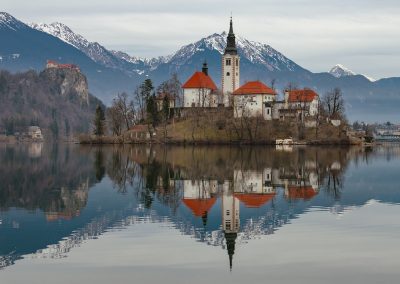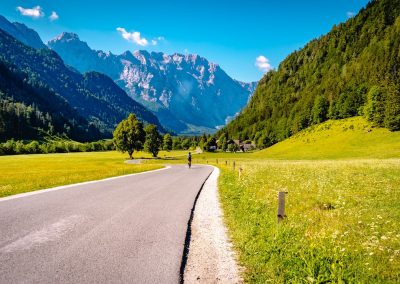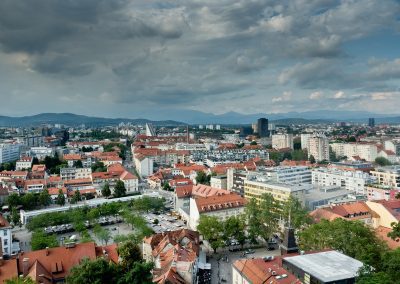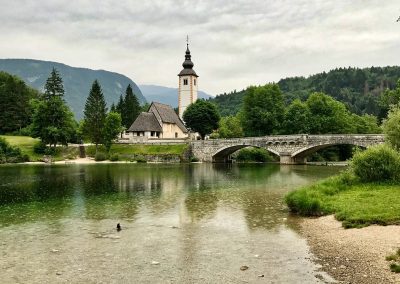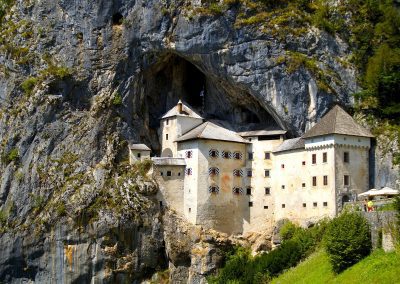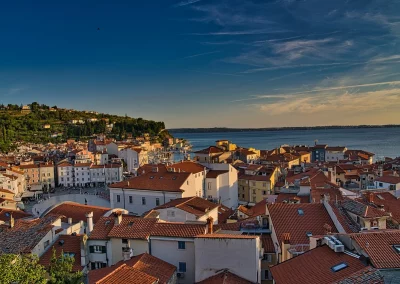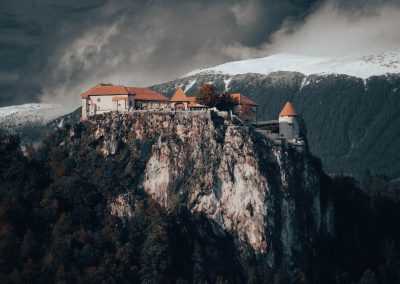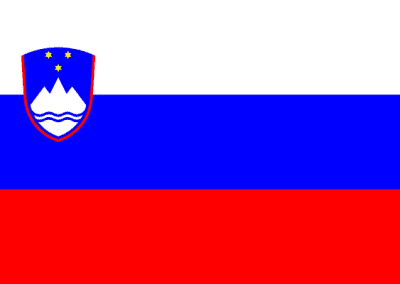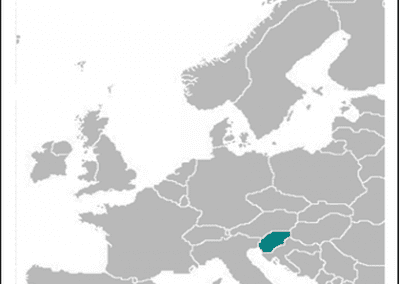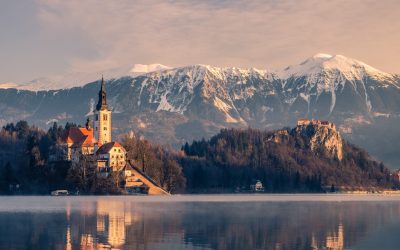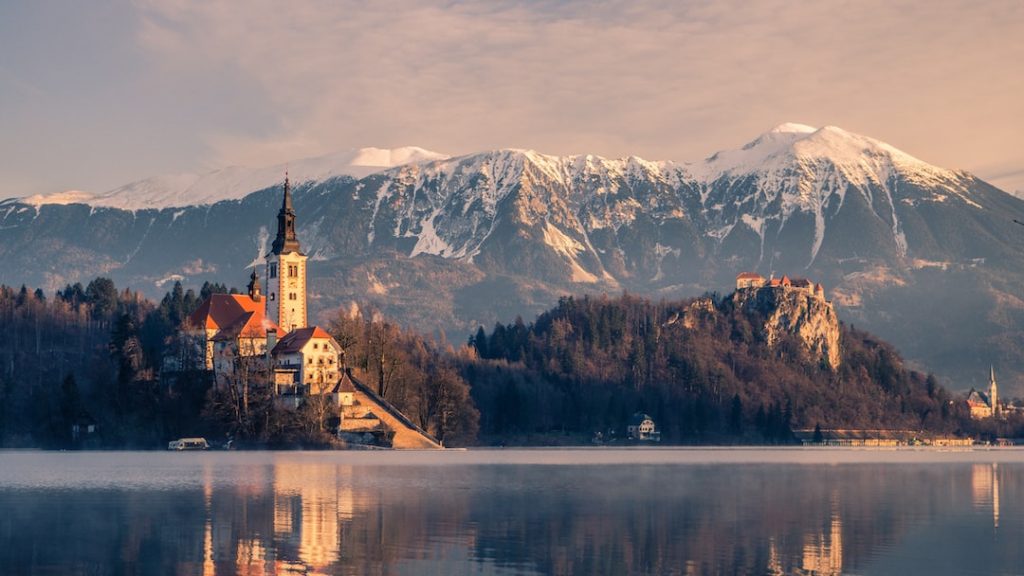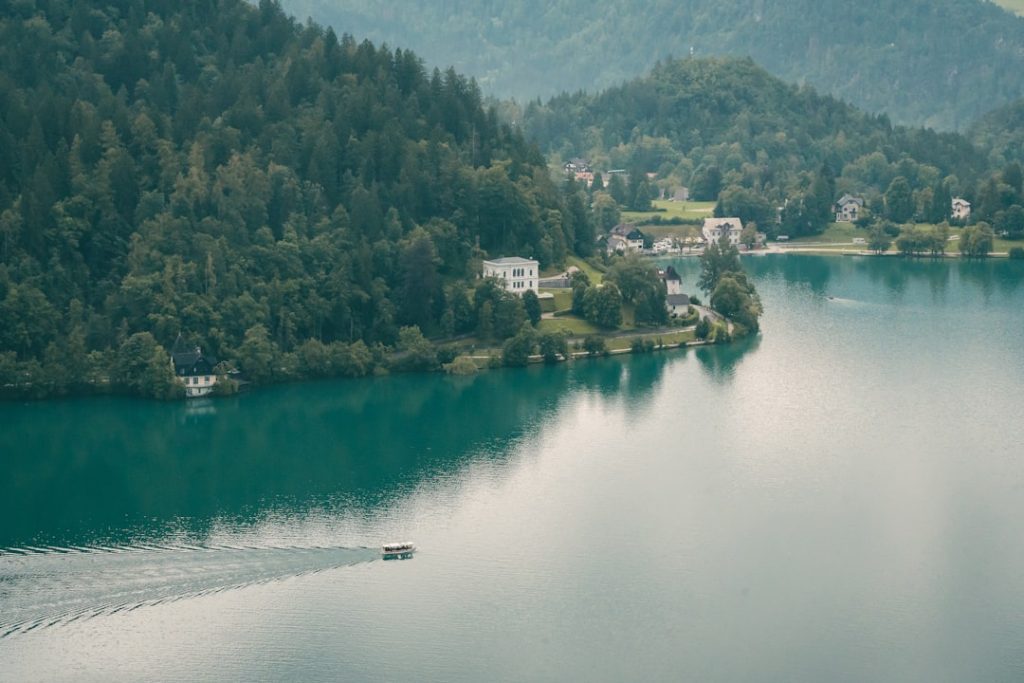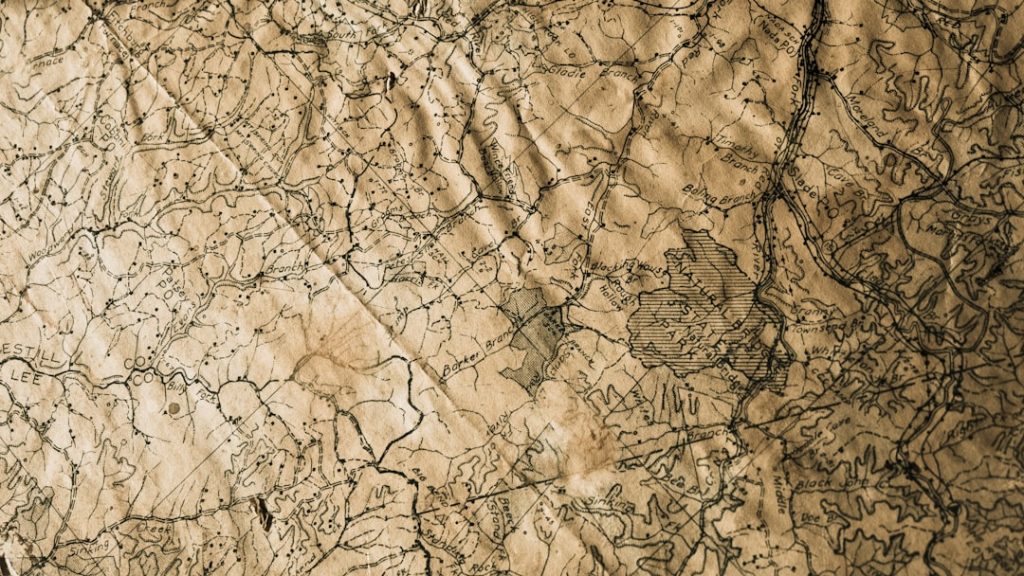Slovenia
(Republika Slovenija (Republic of Slovenia))
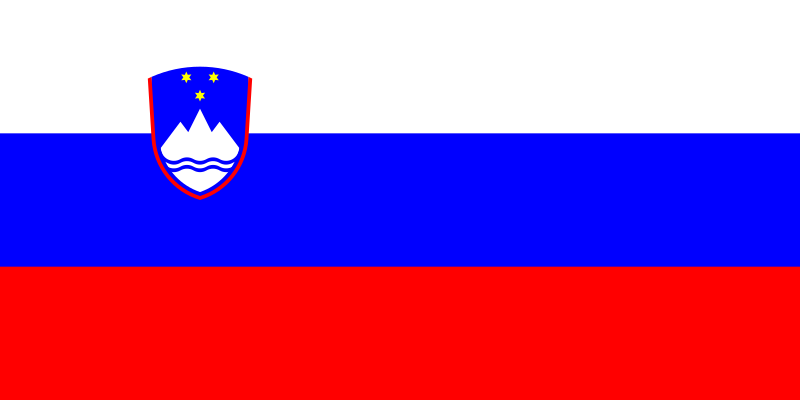
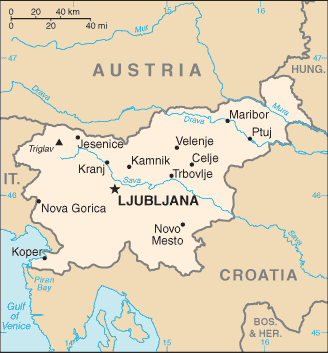
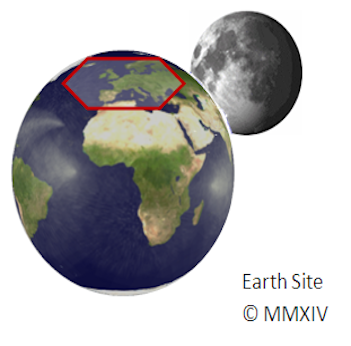
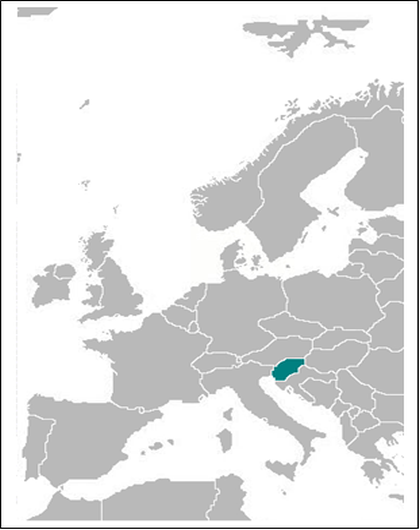
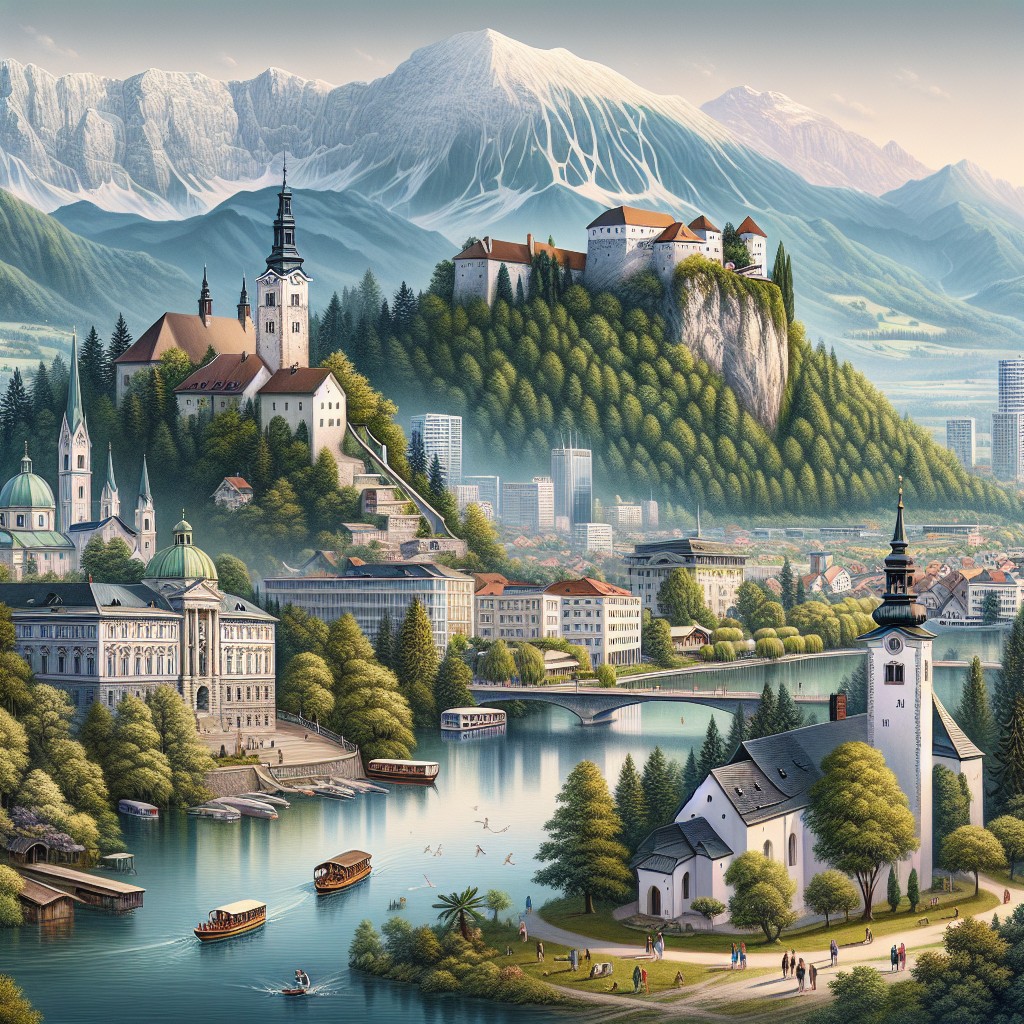
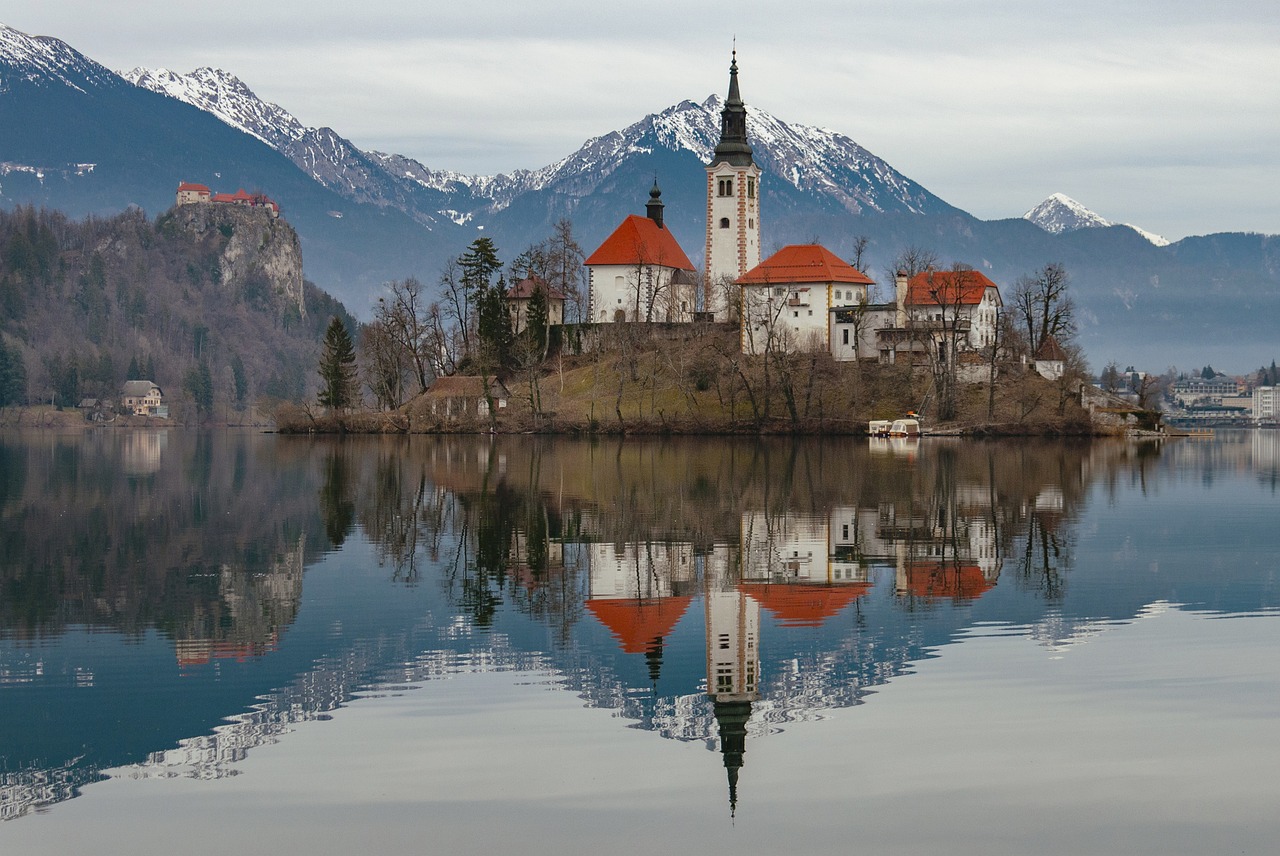
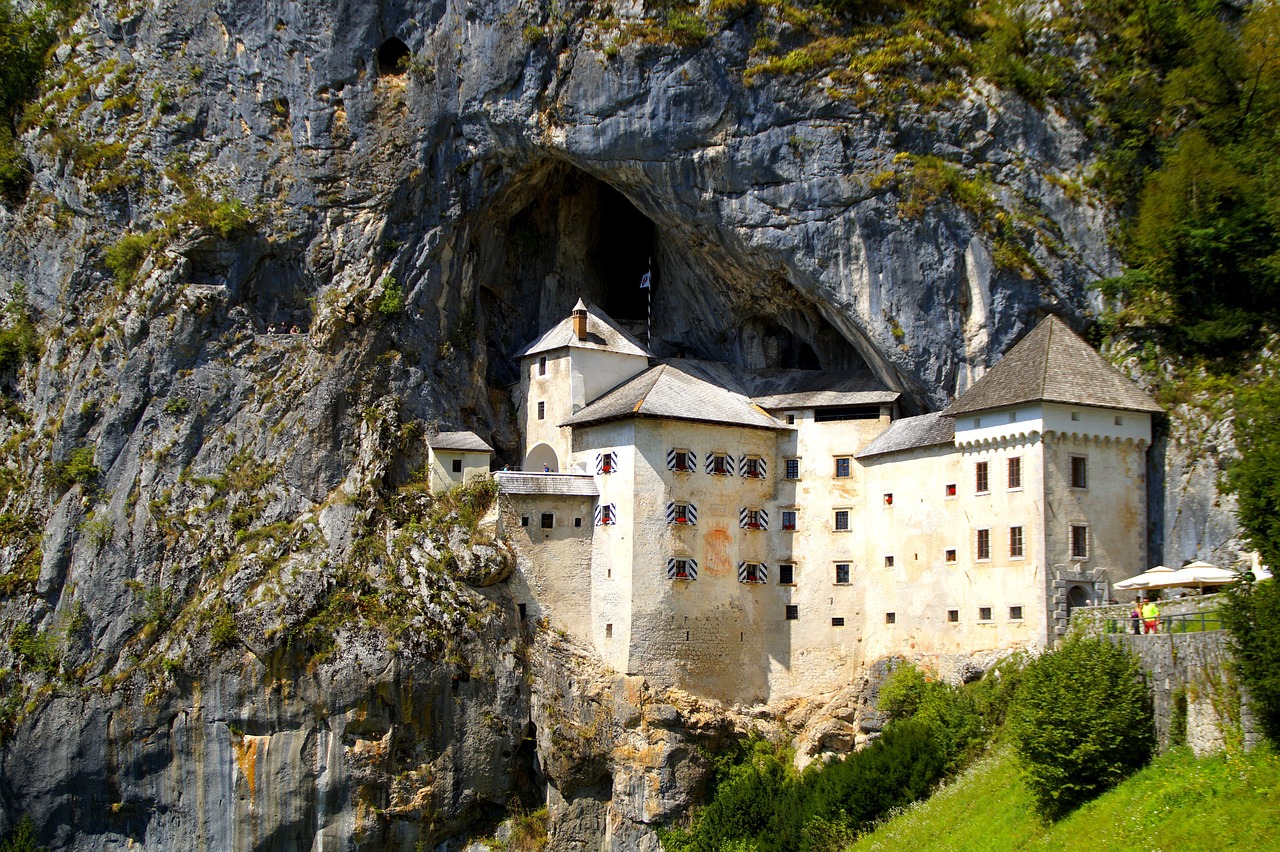
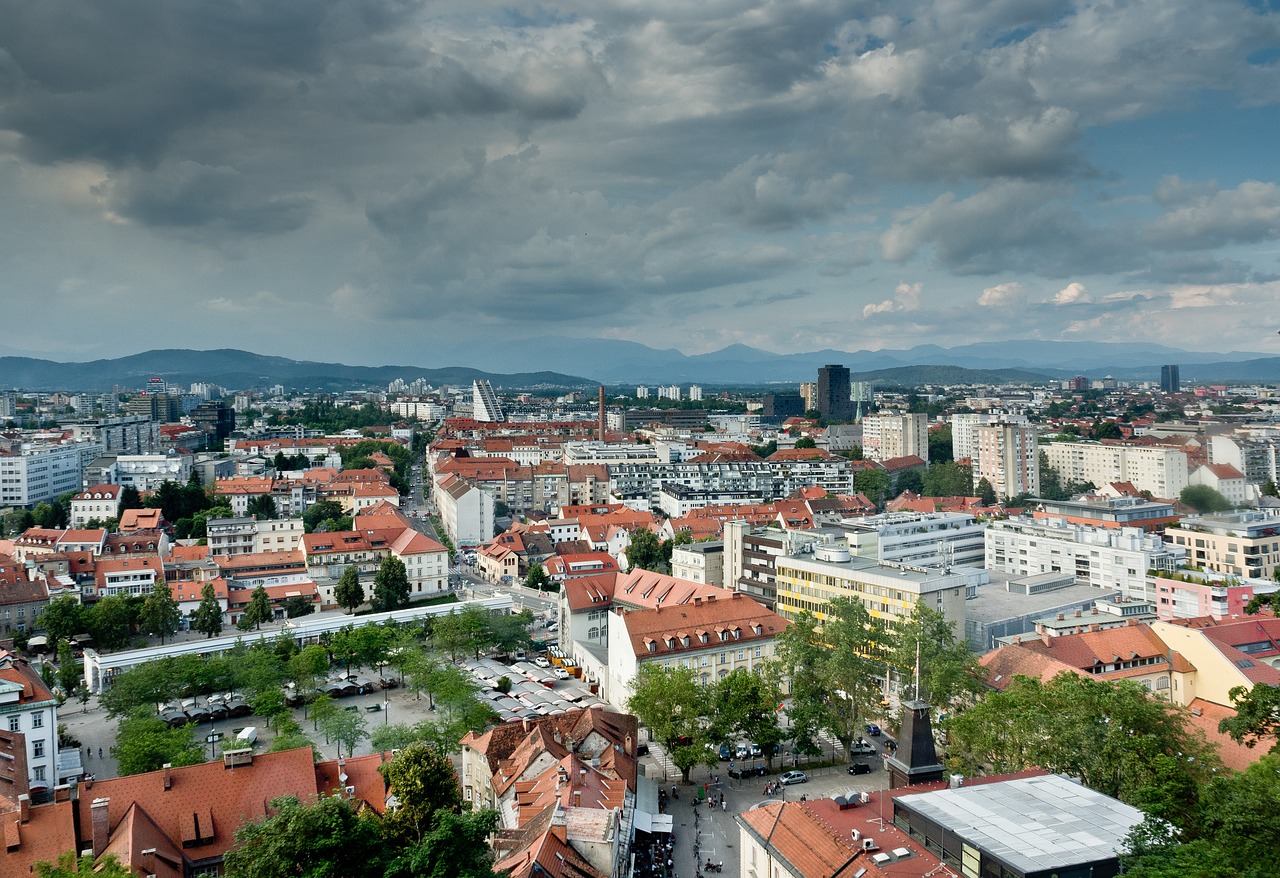
Capital: Ljubljana
Population (Estimated July 2012): 1,996,617
Area: 20,273km2 or 7,827mi2
Currency: Euro (€)
Official Language: Slovene
Political Information: Parliamentary Republic
Official Religion: No Official Religion
(approximately 57.8% of the population are Roman Catholic, 3.2% have other Christian beliefs, 2.4% are Muslim, 26.5% have other or unspecified beliefs and 10.1% have no religious beliefs)
Highest Mountain: Triglav Mountain at 2,864m or 9,396ft
GDP Official Exchange Rate (OER is more precise at gauging a country’s economic power)
(Estimated 2011): $52.4 billion (US$) or (GBP)
GDP (OER) Per Capita (per member of the population estimated 2011): (US$) or (GBP)
GDP Purchasing Power Parity (PPP is good for gauging living conditions and the use of resources but is not as accurate as OER. This data has been calculated based on the sum value of all goods and services produced in the country valued at prices prevailing in the United States)
(Estimated 2011): $58.56 billion (US$) or (GBP)
GDP (PPP) Per Capita (per member of the population estimated 2011): (US$) or (GBP)
Time Zone (GMT/UTC): +1:00
Counties/Provinces/States: 200 municipalities (obcine, singular – obcina) and 11 urban municipalities (mestne obcine, singular – mestna obcina)
municipalities: Ajdovscina, Apace, Beltinci, Benedikt, Bistrica ob Sotli, Bled, Bloke, Bohinj, Borovnica, Bovec, Braslovce, Brda, Brezice, Brezovica, Cankova, Cerklje na Gorenjskem, Cerknica, Cerkno, Cerkvenjak, Cirkulane, Crensovci, Crna na Koroskem, Crnomelj, Destrnik, Divaca, Dobje, Dobrepolje, Dobrna, Dobrova-Polhov Gradec, Dobrovnik/Dobronak, Dolenjske Toplice, Dol pri Ljubljani, Domzale, Dornava, Dravograd, Duplek, Gorenja Vas-Poljane, Gorisnica, Gorje, Gornja Radgona, Gornji Grad, Gornji Petrovci, Grad, Grosuplje, Hajdina, Hoce-Slivnica, Hodos, Horjul, Hrastnik, Hrpelje-Kozina, Idrija, Ig, Ilirska Bistrica, Ivancna Gorica, Izola/Isola, Jesenice, Jezersko, Jursinci, Kamnik, Kanal, Kidricevo, Kobarid, Kobilje, Kocevje, Komen, Komenda, Kosanjevica na Krki, Kostel, Kozje, Kranjska Gora, Krizevci, Krsko, Kungota, Kuzma, Lasko, Lenart, Lendava/Lendva, Litija, Ljubno, Ljutomer, Log-Dragomer, Logatec, Loska Dolina, Loski Potok, Lovrenc na Pohorju, Luce, Lukovica, Majsperk, Makole, Markovci, Medvode, Menges, Metlika, Mezica, Miklavz na Dravskem Polju, Miren-Kostanjevica, Mirna, Mirna Pec, Mislinja, Mokronog-Trebelno, Moravce, Moravske Toplice, Mozirje, Muta, Naklo, Nazarje, Odranci, Oplotnica, Ormoz, Osilnica, Pesnica, Piran/Pirano, Pivka, Podcetrtek, Podlehnik, Podvelka, Poljcane, Polzela, Postojna, Prebold, Preddvor, Prevalje, Puconci, Race-Fram, Radece, Radenci, Radlje ob Dravi, Radovljica, Ravne na Koroskem, Razkrizje, Recica ob Savinji, Rence-Vogrsko, Ribnica, Ribnica na Pohorju, Rogaska Slatina, Rogasovci, Rogatec, Ruse, Selnica ob Dravi, Semic, Sevnica, Sezana, Slovenska Bistrica, Slovenske Konjice, Sodrazica, Solcava, Sredisce ob Dravi, Starse, Straza, Sveta Ana, Sveta Trojica v Slovenskih Goricah, Sveti Andraz v Slovenskih Goricah, Sveti Jurij ob Scavnici, Sveti Jurij v Slovenskih Goricah, Sveti Tomaz, Salovci, Sempeter-Vrtojba, Sencur, Sentilj, Sentjernej, Sentjur, Sentrupert, Skocjan, Skofja Loka, Skofljica, Smarje pri Jelsah, Smarjeske Toplice, Smartno ob Paki, Smartno pr
urban municipalities: Celje, Koper-Capodistria, Kranj, Ljubljana, Maribor, Murska Sobota, Nova Gorica, Novo Mesto, Ptuj, Slovenj Gradec, Velenje
Leaders: President Danilo Türk; Prime Minister Janez Janša
Additional: Originally part of the Socialist Federal Republic of Yugoslavia (SFRY) but left Yugoslavia, gaining independence on the 25th of June 1991.
Sources: CIA World Fact Book, Encyclopaedia Britannica.
Slovenia
Slovenia, a small yet captivating country nestled in the heart of Europe, boasts a diverse geography that ranges from the majestic Alps in the north to the picturesque Adriatic coastline in the south. Covering an area of approximately 20,273 square kilometres, Slovenia is bordered by Austria to the north, Italy to the west, Hungary to the northeast, and Croatia to the south and southeast. This strategic location has made Slovenia a crossroads of various cultures and influences throughout its history.
The country is characterised by its varied landscapes, which include rolling hills, dense forests, and numerous rivers and lakes, with Lake Bled being one of the most iconic. Historically, Slovenia has been shaped by a multitude of civilisations. The region was inhabited by prehistoric tribes, followed by the Celts and Romans, who left an indelible mark on the land.
The fall of the Roman Empire saw Slovenia become part of various kingdoms and empires, including the Frankish Empire and later the Habsburg Monarchy. The 20th century was particularly tumultuous for Slovenia; it was part of the Kingdom of Serbs, Croats, and Slovenes after World War I and later became a republic within Yugoslavia after World War
Summary
- Slovenia is a small country in Central Europe, known for its diverse geography and rich history dating back to the Roman Empire.
- The country boasts a rich cultural heritage, with influences from Slavic, Germanic, and Latin cultures, reflected in its architecture, music, and traditions.
- Slovenia’s natural beauty is a major draw for visitors, with stunning alpine mountains, crystal-clear lakes, and lush green forests offering endless opportunities for outdoor activities.
- Slovenian cuisine is a delightful mix of Mediterranean, Alpine, and Eastern European flavours, with dishes like potica, štruklji, and jota showcasing the country’s culinary delights.
- Visitors to Slovenia can enjoy a wide range of activities and adventures, from hiking and skiing in the mountains to exploring caves, rafting on rivers, and relaxing in thermal spas.
The Rich Cultural Heritage of Slovenia
Slovenia’s cultural heritage is a vibrant amalgamation of influences from its neighbouring countries and its own indigenous traditions. The country is home to a wealth of folklore, music, and art that reflects its diverse history. Traditional Slovenian music often features instruments such as the diatonic accordion and the tamburitza, which are integral to folk celebrations and gatherings.
The country also boasts a rich literary tradition, with notable figures such as France Prešeren, whose poem “A Zdravljica” serves as Slovenia’s national anthem. His work encapsulates the spirit of Slovenian identity and pride. In addition to literature and music, Slovenia’s cultural heritage is evident in its architecture.
The capital city, Ljubljana, showcases a blend of Baroque, Art Nouveau, and modernist styles, with the works of architect Jože Plečnik standing out prominently. His designs have left an indelible mark on the cityscape, with landmarks such as the National and University Library and the iconic Triple Bridge. Beyond urban architecture, Slovenia is dotted with charming villages that preserve traditional wooden houses and rustic farmsteads, offering a glimpse into the country’s agrarian past.
Festivals celebrating local crafts, music, and cuisine further enrich this cultural tapestry, inviting visitors to engage with Slovenia’s heritage in meaningful ways.
Exploring Slovenia’s Natural Beauty
Slovenia is renowned for its breathtaking natural landscapes that offer a plethora of opportunities for exploration and adventure. The Julian Alps dominate the northern part of the country, providing a stunning backdrop for outdoor activities such as hiking, skiing, and mountaineering. Triglav National Park, named after Slovenia’s highest peak, Mount Triglav, is a haven for nature enthusiasts.
The park is home to diverse flora and fauna, including rare species such as the chamois and golden eagle. Numerous well-marked trails wind through the park, catering to both casual walkers and seasoned hikers seeking more challenging routes. In addition to mountainous terrain, Slovenia is blessed with an abundance of water bodies that enhance its natural allure.
The emerald-green Soča River is famous for its crystal-clear waters and is a popular destination for kayaking and rafting. The river’s stunning colour is attributed to its glacial origins, making it a sight to behold. Furthermore, Lake Bled captivates visitors with its idyllic setting; the lake features a picturesque island with a charming church at its centre and is surrounded by lush forests and towering mountains.
Slovenia’s commitment to preserving its natural beauty is evident in its numerous protected areas and sustainable tourism initiatives.
The Culinary Delights of Slovenia
Slovenian cuisine is a delightful reflection of the country’s diverse cultural influences and rich agricultural heritage. The culinary landscape is characterised by regional specialities that vary from one area to another. In the mountainous regions, hearty dishes such as žganci (buckwheat porridge) and various stews are common, while coastal areas offer fresh seafood delicacies like calamari and sardines.
One cannot discuss Slovenian cuisine without mentioning potica, a traditional rolled cake filled with nuts or poppy seeds that is often served during festive occasions. Wine plays an integral role in Slovenian culture, with the country boasting several wine regions known for their high-quality vintages. The Primorska region is particularly famous for its red wines made from indigenous grape varieties such as Refošk and Teran.
Wine tourism has flourished in recent years, with many vineyards offering tastings and tours that allow visitors to immerse themselves in Slovenia’s winemaking traditions. Additionally, local markets are vibrant hubs where one can sample artisanal cheeses, cured meats, and fresh produce while engaging with local farmers and producers. This emphasis on local ingredients not only enhances the culinary experience but also supports sustainable practices within the community.
Activities and Adventures in Slovenia
Winter Wonderland
In the winter months, Slovenia’s ski resorts, such as Vogel and Kranjska Gora, attract visitors from far and wide with their immaculately groomed slopes and breathtaking alpine scenery. Skiing, snowboarding, and snowshoeing are just a few of the popular activities that allow visitors to experience the country’s winter wonderland in all its glory.
Springtime Delights
As spring arrives, Slovenia’s hiking trails come alive with vibrant wildflowers and lush greenery. The Julian Alps offer numerous routes for hikers of all skill levels, including the popular Seven Lakes Valley hike in Triglav National Park, which takes adventurers past stunning glacial lakes nestled among towering peaks.
Summer Fun
In the summer, visitors can enjoy a range of water-based activities, including rafting on the Soča River or swimming in Lake Bohinj’s pristine waters. Cycling enthusiasts can explore scenic routes through vineyards or along picturesque riverbanks, taking in the breathtaking landscapes and soaking up the sun. With its unique combination of stunning scenery and diverse activities, Slovenia is the perfect destination for those looking to immerse themselves in nature while enjoying an active lifestyle.
Slovenia’s Charming Cities and Towns
Slovenia’s cities and towns are imbued with charm and character that reflect the country’s rich history and cultural diversity. Ljubljana, the capital city, is often regarded as one of Europe’s most liveable cities due to its vibrant atmosphere and pedestrian-friendly layout. The city’s historic centre features cobbled streets lined with colourful buildings adorned with intricate facades.
The Ljubljana Castle perched atop a hill offers panoramic views of the cityscape while providing insight into Slovenia’s medieval past. Beyond Ljubljana lies a treasure trove of charming towns waiting to be explored. Piran, located on the Adriatic coast, enchants visitors with its narrow streets and Venetian-style architecture.
The town’s main square features a striking church that overlooks the harbour, creating a picturesque setting for leisurely strolls along the waterfront. Similarly, Maribor, Slovenia’s second-largest city, is known for its wine culture and hosts one of the oldest grapevines in the world—over 400 years old—located in the city centre. Each town possesses its own unique character; from Celje’s medieval castle ruins to Ptuj’s rich Roman heritage, exploring these locales offers a deeper understanding of Slovenia’s historical narrative.
Slovenian Festivals and Traditions
Slovenia’s calendar is filled with vibrant festivals that celebrate its rich cultural heritage and traditions throughout the year. One of the most significant events is Kurentovanje, held annually in Ptuj to mark the beginning of spring. This lively festival features participants dressed as Kurents—traditional figures adorned with fur costumes—who dance through the streets to chase away winter spirits.
The event attracts thousands of visitors eager to witness this unique celebration that embodies Slovenian folklore. Another notable festival is Ljubljana’s Festival of Lights (Lučke), which transforms the city into a dazzling spectacle each winter. Artists from around the world create stunning light installations that illuminate Ljubljana’s streets and landmarks, creating an enchanting atmosphere that draws locals and tourists alike.
Additionally, food festivals celebrating local cuisine are prevalent throughout Slovenia; events such as the Olive Oil Festival in Istria showcase regional products while providing opportunities for tastings and culinary workshops. These festivals not only highlight Slovenia’s cultural richness but also foster community spirit by bringing people together in celebration.
Practical Tips for Visiting Slovenia
When planning a visit to Slovenia, there are several practical tips that can enhance your experience in this enchanting country. Firstly, public transportation is efficient and well-connected; trains and buses provide easy access between major cities and popular tourist destinations. For those who prefer flexibility in their travel plans, renting a car can be advantageous for exploring remote areas or hidden gems off the beaten path.
Language may pose a minor barrier; however, English is widely spoken among younger generations and in tourist areas. Familiarising oneself with basic Slovenian phrases can be beneficial and appreciated by locals. Additionally, it’s advisable to check local customs regarding dining etiquette; for instance, it is customary to greet your host upon entering their home or restaurant.
Lastly, consider visiting during shoulder seasons—spring (April to June) or autumn (September to October)—to avoid crowds while enjoying pleasant weather conditions ideal for outdoor activities. Whether you’re drawn by Slovenia’s natural beauty or its rich cultural heritage, being well-prepared will ensure an unforgettable journey through this remarkable country.
One interesting article related to Slovenia can be found in the Array, which discusses the country’s stunning natural beauty and outdoor activities. From the picturesque Lake Bled to the Julian Alps, Slovenia offers a wide range of opportunities for hiking, skiing, and exploring the great outdoors. For more information on Slovenia’s natural wonders, you can check out the article here.
FAQs
What is the capital of Slovenia?
The capital of Slovenia is Ljubljana.
What is the population of Slovenia?
As of 2021, the population of Slovenia is estimated to be around 2.1 million people.
What is the official language of Slovenia?
The official language of Slovenia is Slovene.
What currency is used in Slovenia?
The official currency of Slovenia is the Euro (EUR).
What are some popular tourist attractions in Slovenia?
Some popular tourist attractions in Slovenia include Lake Bled, Postojna Cave, Ljubljana Castle, Triglav National Park, and the coastal town of Piran.
What is the climate like in Slovenia?
Slovenia has a diverse climate, with Alpine, Mediterranean, and Continental influences. The coastal region has a Mediterranean climate, while the interior experiences colder winters and warmer summers.
What are some traditional Slovenian dishes?
Traditional Slovenian dishes include potica (a sweet bread roll), štruklji (dumplings), jota (a bean and sauerkraut stew), and prekmurska gibanica (a layered cake).
What are some popular outdoor activities in Slovenia?
Slovenia is known for its outdoor activities such as hiking in the Julian Alps, cycling along the Drava River, and water sports on Lake Bohinj. Skiing and snowboarding are also popular in the winter months.
Political Boundaries of Slovenia: Provinces, Districts, or Historical Boundaries.
Slovenia, a small yet vibrant country located in Central Europe, is characterised by its diverse landscapes and rich cultural heritage. The political boundaries...
Natural Resources of Slovenia: Where Natural Resources are Located in Slovenia
Slovenia, a small yet remarkably diverse country located in Central Europe, is endowed with a wealth of natural resources that play a crucial role in its economy and environmental sustainability. Nestled between the Alps and the Adriatic...
Climate Zones of Slovenia: Different Climate Regions Of Slovenia
Slovenia, a small yet diverse country located in Central Europe, boasts a rich tapestry of climate zones that contribute to its unique ecological and geographical characteristics. The interplay of the Alps, the Mediterranean Sea, and the Pannonian Plain creates a variety of microclimates within its borders. This climatic diversity not only shapes the natural environment but also influences agriculture, tourism, and the daily lives of its inhabitants. Understanding these climate zones is essential for appreciating Slovenia‘s natural beauty and the challenges it faces in the context of climate change. The country can be broadly categorised into five distinct climate zones: Alpine, Mediterranean, Pannonian, Sub-Mediterranean, and Continental. Each zone exhibits its own set of climatic conditions, flora, and fauna, which are shaped by factors such as altitude, proximity to water bodies, and prevailing winds. This article delves into each of these climate zones, exploring their characteristics, significance, and the implications they hold for Slovenia’s future. Summary Slovenia has a diverse range of climate zones, each with its own unique characteristics and influences. The Alpine climate zone is characterized by cold winters, heavy snowfall, and mild summers, making it ideal for winter sports and outdoor activities. The Mediterranean climate zone in Slovenia is known for its warm, dry summers and mild, wet winters, creating a perfect environment for vineyards and olive groves. The Pannonian climate zone experiences hot summers and cold winters, with limited precipitation, making it suitable for agriculture and wine production. The Sub-Mediterranean and Continental climate zones in Slovenia have their own distinct features, from mild winters and hot summers to cold winters and warm summers, respectively. Alpine Climate...
Terrain and Topography of Slovenia: mountains, valleys, and plains.
Slovenia, a small yet remarkably diverse country nestled in the heart of Europe, boasts a terrain that is as varied as it is beautiful. Spanning approximately 20,273 square kilometres, Slovenia‘s landscape is a tapestry woven from majestic mountains, serene plains, and charming valleys. The country is bordered by Austria to the north, Italy to the west, Hungary to the northeast, and Croatia to the south and southeast, which contributes to its rich geographical diversity. This unique positioning has resulted in a variety of ecosystems and topographical features that not only define Slovenia’s natural beauty but also influence its climate, wildlife, and human activities. The topography of Slovenia is characterised by its dramatic contrasts. The Julian Alps dominate the northwestern part of the country, while the Karst region in the southwest presents a starkly different landscape of limestone formations and underground caves. The central part of Slovenia is home to rolling hills and fertile valleys, which are interspersed with rivers and lakes. This geographical diversity creates a mosaic of habitats that support a wide range of flora and fauna, making Slovenia a hidden gem for nature enthusiasts and outdoor adventurers alike. The interplay between these various terrains shapes not only the physical landscape but also the cultural and historical narratives of the Slovenian people. Summary Slovenia’s terrain is diverse, ranging from majestic mountains to serene plains, and charming valleys. The majestic mountains of Slovenia, including the Julian Alps and Kamnik-Savinja Alps, offer breathtaking views and excellent hiking opportunities. The charming valleys of Slovenia, such as the Soca Valley and Logar Valley, are perfect for exploring picturesque landscapes and enjoying outdoor...
History of Slovenia
The history of Slovenia can be traced back to the early settlements of various tribes, with evidence suggesting that the area was inhabited as far back as the Stone Age. Archaeological findings indicate that the region was home to the Celts, who established settlements in the 4th century BThe most notable of these was the settlement of Emona, located in present-day Ljubljana, which became a significant urban centre during the Roman Empire. Emona was strategically positioned along the trade routes connecting the Adriatic Sea to the northern provinces of the empire, facilitating commerce and cultural exchange. The Roman influence on Slovenia was profound and enduring. The Romans introduced advanced infrastructure, including roads, aqueducts, and public buildings, which laid the groundwork for future urban development. The remnants of Roman architecture can still be seen today, with sites such as the well-preserved Roman theatre in Ljubljana and the ruins of ancient fortifications scattered throughout the country. This period also saw the introduction of Roman law and governance, which would shape the administrative practices in the region for centuries to come. The integration of local tribes into the Roman way of life fostered a blend of cultures that would influence Slovenian identity in subsequent eras. Summary Early settlement in Slovenia dates back to the Roman period, with Roman influence shaping the region’s culture and architecture. The medieval period saw the Habsburg rule in Slovenia, which had a significant impact on the country’s political and social development. The Slovenian National Awakening in the 19th century marked a period of cultural and political revival, leading to the emergence of a distinct Slovenian national identity....
Cultural or Historical Sites of Slovenia: Important Cultural Landmarks or Historical Sites In Slovenia
Slovenia, a small yet captivating country nestled in the heart of Europe, boasts a rich tapestry of cultural and historical sites that reflect its diverse heritage. With a history that intertwines influences from the Roman Empire, the Habsburg Monarchy, and the Yugoslav era, Slovenia offers a unique glimpse into the past through its well-preserved landmarks and monuments. From ancient castles perched on hilltops to intricate cave systems that have been shaped over millennia, the country is a treasure trove for history enthusiasts and casual visitors alike. Each site tells a story, revealing the evolution of Slovenian identity and the resilience of its people through the ages. The charm of Slovenia’s cultural landscape lies not only in its historical significance but also in its stunning natural surroundings. The interplay between man-made structures and the breathtaking scenery creates an enchanting atmosphere that draws visitors from around the globe. As one traverses the country, it becomes evident that Slovenia is a place where history is not merely preserved but celebrated, inviting exploration and appreciation. This article delves into some of Slovenia’s most remarkable cultural and historical sites, each offering a unique perspective on the nation’s rich heritage. Summary Slovenia is home to a rich cultural and historical heritage, with numerous sites that offer a glimpse into the country’s past. Ljubljana Castle stands as a symbol of Slovenian history, offering panoramic views of the city and housing a museum that showcases the country’s heritage. The Škocjan Caves, a UNESCO World Heritage Site, boast stunning underground chambers and a river canyon, making it a must-visit for nature and history enthusiasts. Predjama Castle, built within...
Population Density of Slovenia
Population density is a critical demographic metric that reflects the number of individuals residing in a given area, typically expressed as inhabitants per square kilometre. This measure serves as a vital indicator of how populated a region is and can significantly influence various socio-economic factors, including resource allocation, urban planning, and environmental sustainability. In Slovenia, a country characterised by its diverse landscapes and rich cultural heritage, understanding population density is essential for grasping the dynamics of its population distribution and the challenges that arise from it. Slovenia, with its relatively small land area of approximately 20,273 square kilometres and a population of around 2 million, presents an intriguing case study in population density. The interplay between urbanisation, economic development, and geographical features shapes the distribution of its inhabitants. As Slovenia continues to evolve in the context of European integration and globalisation, the implications of population density become increasingly significant, affecting everything from housing and transportation to healthcare and education. Summary Population density refers to the number of people living in a specific area, usually measured in square kilometres. Factors affecting population density in Slovenia include natural resources, economic opportunities, and government policies. Urban areas in Slovenia have higher population density compared to rural areas due to better job opportunities and amenities. Population density in Slovenia has changed over time, with urbanisation and industrialisation leading to higher concentrations of people in certain areas. Slovenia’s population density is lower compared to neighbouring countries like Italy and Austria, impacting infrastructure and resource management. Factors Affecting Population Density in Slovenia Several factors contribute to the population density observed in Slovenia, each interwoven with...
Discovering the Hidden Gems of Slovenia: A Journey Through the Picturesque Landscapes and Rich Culture
Slovenia may be a small country, but it is packed with hidden gems waiting to be discovered. Nestled between Italy, Austria, Hungary, and Croatia, Slovenia offers a diverse range of landscapes, from majestic mountains to crystal-clear lakes and lush forests. While popular destinations like Lake Bled and Ljubljana are well-known, there are many lesser-known attractions and experiences that showcase the true beauty and culture of this hidden gem. Summary Slovenia is a hidden gem with natural wonders, rich history and culture, charming towns and villages, delicious cuisine and wine, artistic and creative side, thriving outdoor activities, and friendly locals. Exploring Slovenia’s natural wonders includes visiting the stunning Lake Bled, the underground Postojna Cave, and the Triglav National Park. Delving into Slovenia’s rich history and culture involves exploring the medieval Ljubljana Castle, the Lipica Stud Farm, and the Skocjan Caves. Discovering Slovenia’s charming towns and villages includes visiting the coastal town of Piran, the picturesque village of Bled, and the historic town of Ptuj. Sampling Slovenia’s delicious cuisine and wine involves trying traditional dishes like potica and jota, and tasting local wines like Rebula and Teran. Exploring Slovenia’s Natural Wonders Slovenia is a nature lover’s paradise, with its stunning landscapes and outdoor activities. The country is home to the Julian Alps, which offer excellent hiking and skiing opportunities. Triglav National Park is a must-visit for outdoor enthusiasts, with its rugged peaks, glacial lakes, and picturesque valleys. The park is also home to Mount Triglav, the highest peak in Slovenia. For water sports enthusiasts, Lake Bled is a popular destination. With its emerald-green waters and a medieval castle perched on a...


